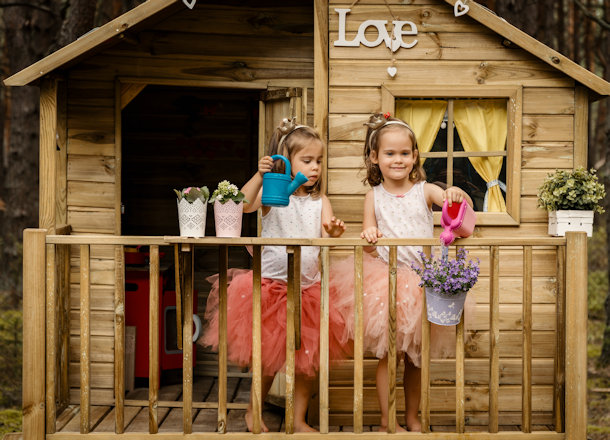Building permits aren’t usually a popular topic of conversation among contractors. There’s little common ground because the rules can vary so widely from state to state and even community to community. It often seems as if they’re changed on the whims of the city or borough planning board or code enforcement office.
For decades, building a kid’s playhouse or treehouse was simply drawing a basic design, buying the materials and putting it up. Recently, one permit fiasco almost made it to the U.S. Supreme Court, which cost the homeowners multiple thousands of dollars – well beyond its original construction cost.
When to Get a Building Permit
There’s really no good reason not to ask the code department about permits for every backyard project, but some homeowners inevitably try to buck the system. Whether they believe their property is secluded enough that a large play structure won’t bother anyone, don’t want to pay the extra fees or costs for required permits or simply believe they can do what they want on their own property, it’s up to you to set them straight before starting any work. The following points more than justify that suggestion because they protect you and the homeowner.
• Avoiding a stop work or tear down order during or following constructions.
• Ensuring you follow municipal construction methods and practices and approved materials.
• Avoiding any conflicts with neighbors who might protest the construction of a treehouse or other structure.
• Preventing the possibility of the homeowner being fined on a daily schedule until an expensive court case is resolved.
• Depending on where the home is located, such as a corner lot, local zoning permits or variances may be required in addition to building permits.
Having the required legal paperwork and permits in hand prevents all types of work delays or job cancellations and averts the possibility of the homeowner having to pay often enormous legal fees and municipal fines.
Size and Height Matter
Most, if not all local municipalities have rules governing the height and size of any detached backyard structure, including those as simple as a gardening shed. A playhouse or treehouse fall under those guidelines. Square footage, height from floor to roof and the absence of any mechanical, electrical or plumbing installations are typically regulated by a specific building code and any variance to it will probably require department approval and permits.
While the greatest risk to non-compliance of local codes is that of potential bodily harm to those entering or occupying such a structure, having to tear down or retroactively alter your work because the playhouse or treehouse exceeds construction guidelines is both inconvenient and expensive. Plus, dealing with potential fines, lawsuits and other legal problems can seriously cut into your productivity level and even your professional reputation.
The More Elaborate the Structure, the More Permits It Takes
Back in the day, a treehouse or backyard fort was a simple affair: four walls and a flat roof, a door and maybe a couple of windows for the view and hauling up drinks and snacks via a rope tied to a bucket. Now, the same ‘adult’ treehouse craze sweeping the nation has spread to include children’s play structures. It’s become a matter of pride to some homeowners to construct tiny mansions in the yard or trees for their kids – complete with all the features and comforts of the main residence.
What used to be a simple, one- or two-day construction job has evolved into a construction site as complex as that of any residential job. This naturally involves multiple types of building permits, multiple types of professional inspections and multiple types of sub-contractors. You’re probably more comfortable in such a situation, as there are few surprises on such jobs. You know what you’re dealing with.
Backyard treehouses and playhouses have long been part of the American fabric. But with their increasing popularity and complex designs, state, county and local building codes are also changing. It’s vital to stay informed about those changes to meet all the necessary requirements. Let’s face it: they’re not your dad’s treehouses anymore.
Are you familiar with local building codes governing such backyard construction projects? Have you ever dealt with any code problems with them?


